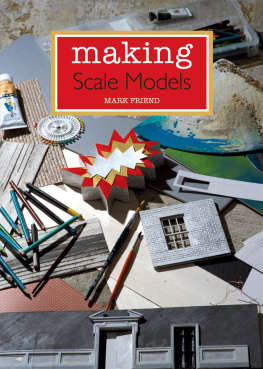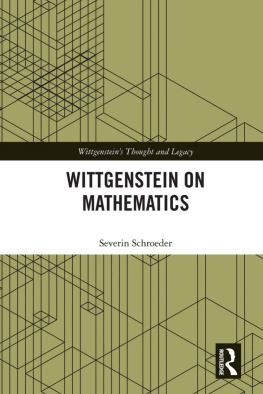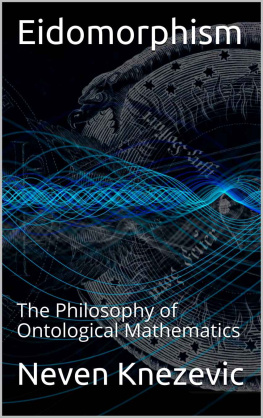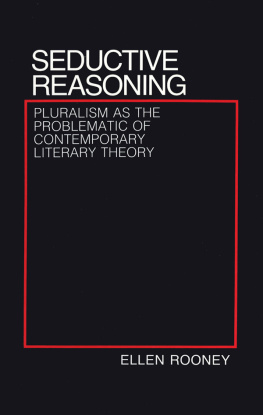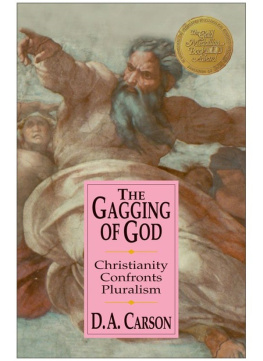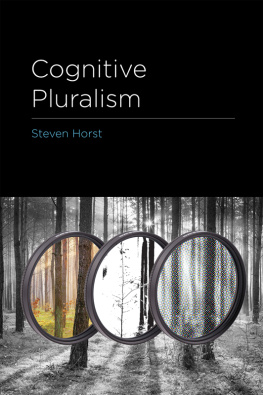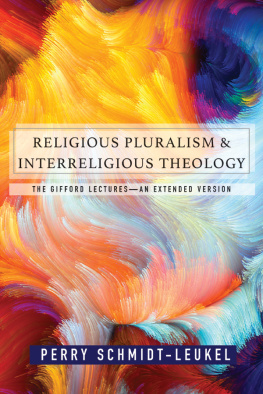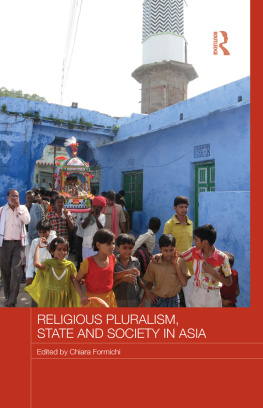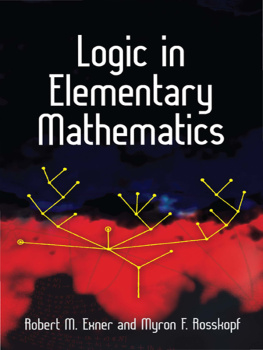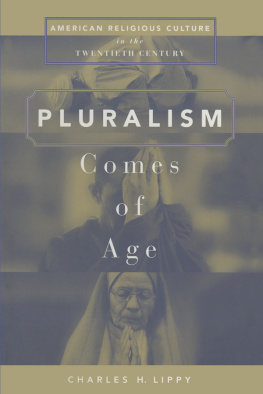1.1 Introduction
There are four parts to this book. The first is motivational. I give motivations for adopting pluralism from four separate starting points: realism, Maddys naturalism, Shapiros structuralism and formalism. For reading this part of the book, I suggest reading the first chapter on realism in order to gain some orientation concerning pluralism, and as an introduction to some vocabulary which is used idiosyncratically. There is a glossary for further reference, or to use as a reminder.
The three other chapters of the first part are self-contained, and are directed towards philosophers with certain inclinations. That is, if one has naturalist inclinations, one should read the naturalism chapter. If one has structuralist inclinations, one should read the structuralism chapter and if one has formalist inclinations, one should read the formalism chapter. If the reader is none of the above, then she can read these chapters only to become acquainted with some motivations for adopting pluralism. This part of the book is not exhaustive in discussing all possible motivations for pluralism. Not only are there only a few non-pluralist positions discussed, but even within the motivational chapters on naturalism and structuralism I target one philosophers philosophy in this area, not all of the well received versions. The philosophers in question are Maddy and Shapiro, respectively. Motivating pluralism from other starting points is part of the greater pluralist programme. Similarly, comparing and contrasting other positions with pluralism is part of the greater programme. I return to it in one section of .
Pluralism is not just one position in the philosophy of mathematics, it is a family of positions. This is one of the reasons I call it a programme. This book gives a starting push to the programme. Different members of the family are distinguished along the dimensions of: degree (of pluralism), underlying logic and sort of pluralism. Examples of sorts are: foundational, methodological, epistemological and alethic. The pluralist not only distinguishes himself from other positions in the philosophy of mathematics, he is inspired by other positions. In particular, the pluralist retains lessons from the realist, the naturalist, the structuralist, the formalist and the constructivist. The last source of inspiration will be put to work in the fourth part of the book.
The second part of the book concerns the details of how to cope with the inevitable conflicts and contradictions which surface when entertaining very different philosophical positions and mathematical theories under one theory. This part concerns reasoning in the light of contradiction and conflict. I first present pluralism as a philosophical position in its own right. I make reference to a paraconsistent formal system as a guide to reasoning about conflicting ideas without necessarily having to decide that one idea is correct and the other is not, or that one position wins over another. Sometimes one does win, but in more sophisticated arguments, there will not be a clearly correct position. Since I am presenting a philosophical position, I can only make reference to a formal system of logic, as opposed to using a formal system. This is because the pluralist philosopher is not comparing propositions or well-formed formulas and reasoning from these to theorems or conclusions. This is why I write about using a formal logic metaphorically in . We shall see in these chapters a tension and a struggle with meaning, ontology and truth. These are traded for the more practice reflecting: communication, rigour and protocol. The struggle is the struggle of the pluralist. It is the cost of taking on board the task of explaining what mathematics is about without compromising on the real subtleties in operation in mathematics.
In the third part of the book I work with the paradoxes of tolerance and the idea of transcending ones own position. The paradoxes of tolerance surface when we ask the questions: does it makes sense to be tolerant towards those who are intolerant of our own tolerant position? and are there not some things the pluralist is intolerant towards? In , I discuss the paradoxes, and explain that the pluralist is not a global pluralist, but a maximal pluralist. He would be a global pluralist if he were tolerant of everything. He is a maximal pluralist if he is as tolerant as possible without his position becoming self-defeating. The maximal pluralist is intolerant towards dogmatism, and particular moves made by, say, realists, naturalist and structuralists against other positions, and pluralism.
In we visit the more subtle question of whether the pluralist is pluralist towards himself. Another way to ask this is to ask if the pluralist is dogmatic in the ways identified in the previous chapter. To answer this question, we first explore Meyers collapsing lemma. I use this to a very modest end, to indicate that the paraconsistent logician wedded to LP (a particular paraconsistent logic) will have to be pluralist about interpretations of his logic. The result generalises to anyone who is both pluralist and fixes on a particular logic to underpin his pluralism.
In contrast, if we are logical pluralists, then we have another reason to be pluralist about pluralism. Using other logics will give a different flavour to pluralism. The pluralist is pluralist towards himself just in virtue of admitting alternative logical formal systems to underpin pluralism. Again, qua programme, here we see that we can make different versions of pluralism by adopting different underlying formal logical systems.
The fourth part of the book puts the pluralist to work. I indicate some sample pluralist exercises. The first concerns the notion of proof in mathematics. The pluralist analyses the notion of proof as it is used by the working mathematician and draws conclusions about the role of proof in mathematics. In .
1.2 A Note on Conventions
Definitions for technical terms are usually given at their first mention, but not invariably, for example in this introduction I have used many such words without giving a definition. Technical terms are given a definition in the glossary. The index should provide further guidance.
The pluralist is used to name a character who takes on some sort of pluralist philosophy of mathematics. The definite article is used in the same way as when we say the logician and are referring, not to an individual (person) but to a species, or type of person. More technically, the pluralist is not a first-order singular term, but a second-order singular term. Pluralism is a family of positions. As such, the different pluralisms have many features in common, and can all avail themselves of most of the same arguments against other positions.
I use he throughout for the pluralist. This is because I am a she and I do not want to show prejudice. Other philosophical or mathematical characters might be given the preposition he, she or it. I use it for the more obscure, remote or extreme positions, which are just philosophical constructs. In these cases it is possible that no one ever did or ever will hold the position. It is supposed that if someone were to hold the position, such a person would not hold it for long. It is more a position to be temporarily entertained than seriously defended. An example is the trivialist. An example is the trivialist position. A trivialist is an it.


